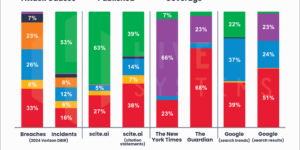Catastrophe risk modeler RMS has released version 15.0 of its RMS Europe Windstorm and RMS North Atlantic Hurricane Models.
Matthew Grant, general manager of models and data at RMS, said the updated models “deliver even sharper risk differentiation to help our clients further optimize their risk selection and more efficiently allocate capital. We’ve built on the models’ existing methodology and incorporated several years of new data and scientific research to deliver the most accurate representation of the risk.”
Hazard and vulnerability components for the European Windstorm Models have been updated to strengthen risk selection and portfolio management capabilities, RMS said in a statement. The models also provide the ability to explore how climate variability impacts the view of risk, giving clients a “transparent model validation process to meet Solvency II regulations, as well as a means to better understand how historical storm variability can affect their modeled losses,” said Grant.
“Since storm activity in recent years has been relatively quiet and most insurers’ claims records only date back 10 to 20 years, the new climactic view provides our clients with an important perspective to develop a more complete view of the risk,” he said in a statement.
Following extensive analysis of claims data for Hurricane Irene and Superstorm Sandy, the North Atlantic Hurricane Models include new functionality to manage coastal flood risk, RMS said. Companies can now quantify the effect on flood loss of multiple basement levels in a building and the total value of contents stored in basements. The updates also offer the option of enabling business interruption to be dependent on either contents or building damage rather than on building damage alone.
“North Atlantic hurricane risk continues to be a principal driver of total annual losses, with storm surge contributing a high proportion of those losses. Our extensive post-Sandy claims data analysis revealed that basement-level property and contents damage contributed to a higher proportion of overall losses than previously expected, especially for commercial structures in central business districts,” said Grant.
Source: RMS




















 Reporter’s Notebook: ‘Nobody Else Does Telematics,’ Lemonade Exec Says
Reporter’s Notebook: ‘Nobody Else Does Telematics,’ Lemonade Exec Says  Safeco to Stop Writing New Condo and Renter Policies in California
Safeco to Stop Writing New Condo and Renter Policies in California  Insurance Carrier Employees Are Bored; Most Boring Rankings Published
Insurance Carrier Employees Are Bored; Most Boring Rankings Published  Slideshow: Carrier Management’s 2024 Top Editor’s Picks (Unlocked)
Slideshow: Carrier Management’s 2024 Top Editor’s Picks (Unlocked) 








